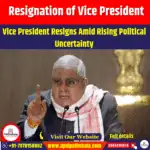Tiananmen Square Massacre of 1989
|
General Studies Paper II: India and its Neighbors |
Why in News?
Recently, on the 36th anniversary of the Tiananmen Square Massacre that occurred during China’s Tiananmen movement in 1989, statements were made by the US Secretary of State and the President of Taiwan, commemorating this historic event. This is an event that the Chinese government continues to suppress domestically even today.
What Was the Tiananmen Square Movement?
- Introduction:
-
-
- In April 1989, over a million people gathered at Tiananmen Square in China to protest against the Chinese government.
- This protest is considered the largest political uprising in China’s history.
- The demonstrations continued for about a month and a half, spreading to several major cities and universities across China.
- The main center of this movement was Tiananmen Square, which was led by students.
-
- Causes:
-
-
- After economic reforms in China, the demand for political change began to gain momentum.
- People were highly dissatisfied with rising inflation, low wages, and government corruption.
- Widespread discontent and anger had spread against China’s authoritarian and dictatorial government.
- People began to raise their voices for their fundamental rights, such as freedom, democracy, and human rights.
-
- Objectives:
-
-
- The primary objective of this movement was to implement democratic reforms in China.
- The protesters demanded equality in society, independent media, and freedom of speech.
- They wanted the Chinese government to be accountable and transparent, and for the Communist leadership to resign.
- The protesters wished for the establishment of a democratic government in the country, where every citizen’s voice could be heard.
-
- Outcome:
-
- This protest lasted from April 15 to June 4, 1989, and ultimately, the government used military force to take strong action against the protesters.
- The army used force to stop the protesters, which resulted in many deaths and thousands of arrests.
- The government took strict measures to suppress this incident and instructed the media to conceal it.
- The Tiananmen Massacre remains a symbol of brutal repression that the international community has never forgotten.
Complete Sequence of Events of the Tiananmen Square Massacre of 1989
- On April 17, 1989, thousands of students and citizens gathered in Tiananmen Square.
- This assembly was organized to mourn the death of Hu Yaobang, a prominent Chinese reformist and anti-corruption leader.
- On this occasion, people’s anger towards the government erupted, which later escalated into a large-scale protest.
- Between April 18 and 21, the number of protesters rapidly increased. During this period, the nature of the protest changed. The protest transformed into a demand for the end of dictatorial rule and for individual freedoms.
- On April 27, approximately one hundred thousand students broke through police barricades and began marching towards Tiananmen Square.
- On May 15, Soviet leader Mikhail Gorbachev arrived in China for a state visit. The Chinese government had to cancel his public welcome due to the ongoing protests.
- On May 19, Zhao Ziyang, the General Secretary of the Communist Party, somewhat supported the protesters and instructed against the use of police force.
- However, between May 20 and 24, Deng Xiaoping, China’s top leader, imposed martial law and ordered the army to control the crowd.
- Students tried to stop the soldiers by building roadblocks on the streets, leading to a tense situation.
- On May 29 and 30, a large statue called the “Goddess of Democracy” was erected near Tiananmen Gate, in front of Mao Zedong’s portrait.
- By June 2, approximately 10,000 soldiers began to deploy in the Great Hall of the People and nearby buildings.
- By June 3, about two hundred thousand soldiers were deployed in Beijing. During this time, 36 protesters were killed near the Muxidi apartments.
- On the morning of June 4, army units entered Tiananmen Square. They destroyed the “Goddess of Democracy” statue with tanks. When students and protesters resisted, soldiers began firing, resulting in the deaths of countless protesters.
Special Note: On June 5, an unknown man bravely blocked tanks on Chang’an Avenue, later called the ‘Tank Man’ and named by Time magazine as one of the 20th century’s most influential figures.
Far-Reaching Effects of the Tiananmen Square Movement
-
Political Changes: After this movement, significant changes occurred within the party. Zhao Ziyang was removed from his positions as the General Secretary of the Party and from the Politburo, while Deng Xiaoping made Jiang Zemin the supreme leader of China. This event signaled the start of a significant shift in China’s political environment.
-
International Sanctions: Following the Tiananmen Massacre, Western countries imposed several sanctions on China.
-
The United States and the European Union, among others, placed economic sanctions on China and imposed a ban on arms exports.
-
The US immediately suspended military sales and high-level diplomatic dialogue.
-
Furthermore, a plan called ‘Operation Yellowbird’ was initiated, aimed at providing security to protesters who had fled from China.
-
Rise of Nationalism: After 1989, the Chinese Communist Party distanced itself from its mainstream communist principles and began to link its legitimacy to national pride. This strategy diverted public attention from the demand for democracy towards a sense of China’s national unity and glory. Among intellectuals, protectionist cultural politics gained more strength.
-
Economic Impact: After the Tiananmen movement, many global analysts expressed pessimism regarding China’s economic future. Due to this severe repression, China’s entry into the World Trade Organization (WTO) was delayed for 12 years. There was also a sharp decline in bilateral aid received by China.
-
Social Impact: The Tiananmen Square incident caused concern among people in Hong Kong. They feared that China would not fulfill its promised ‘one country, two systems’ policy. Because of this, Chris Patten, the Governor of Hong Kong, tried to increase the right for people to vote in the local government. This led to increased differences between Beijing and Hong Kong.
China’s Efforts to Suppress the Memory of the Tiananmen Square Massacre
- According to a 2023 report by Freedom House, China has been responsible for approximately 30% of internationally recorded cases of physical repression since 2014. China has adopted policies to suppress protests and dissent not only within the country but also abroad.
- The report states that due to the punishment of ‘collective punishment’ against the families of protesting dissidents residing in China, many individuals are forced to sever contact with their relatives.
- According to Article 19, supporters and agents of the Chinese Communist Party (CCP) worldwide are attempting to prevent events focused on the Tiananmen Square incident.
- In 2022, a copy of the “Pillar of Shame” statue, made by Danish artist Jens Galschiøt, was demolished in Taipei.
- This statue was made in memory of those who died in the tragedy of June 4, 1989. The original statue remained at the University of Hong Kong for 23 years, but in 2021, university authorities removed it.
- For a long time, the Tiananmen Square incident was remembered in Hong Kong and Macau, but after the pro-democracy protests in Hong Kong in 2019, there was a severe crackdown on civil liberties there. This resulted in a ban on the annual June 4 vigil at Victoria Park.
- For the past three years, on the anniversary of June 4, the Chinese government has been trying to change the atmosphere of protest by organizing food carnivals at that location.









